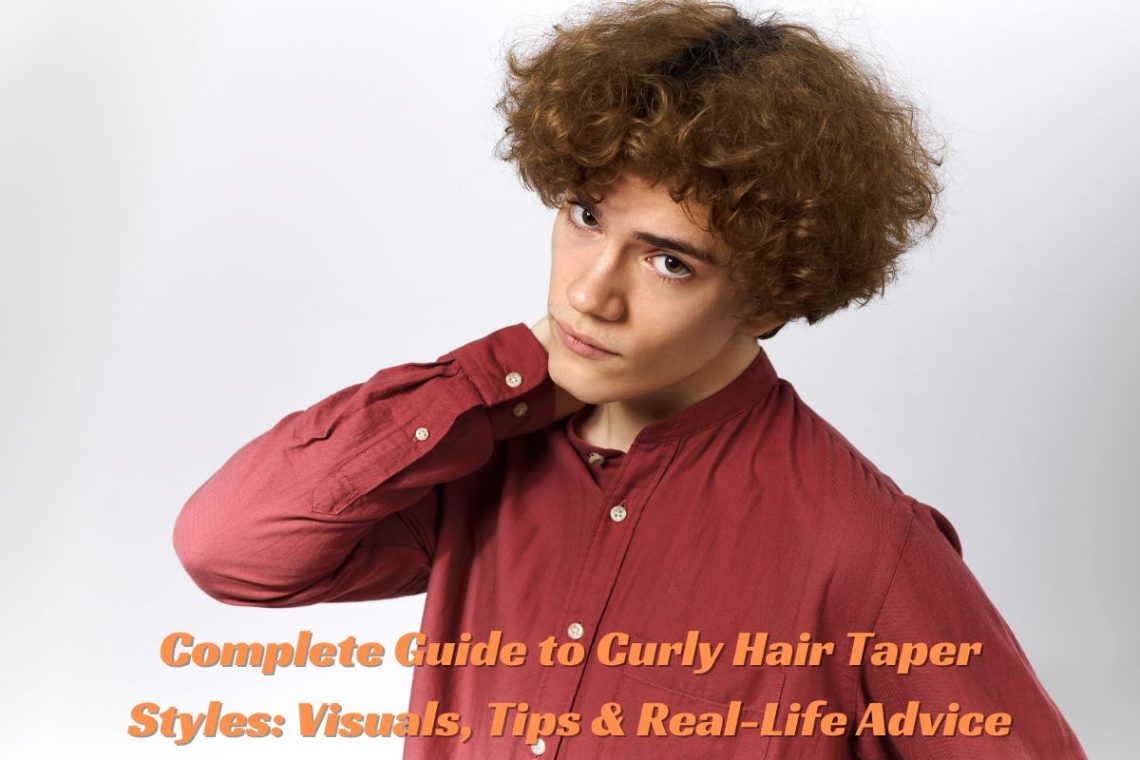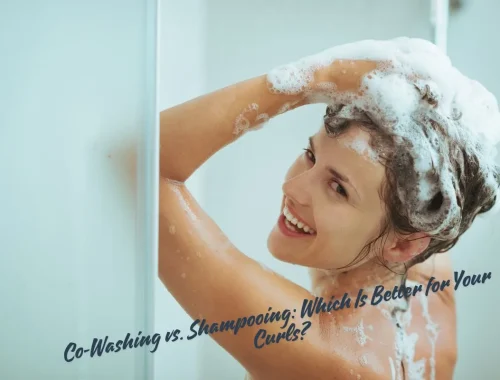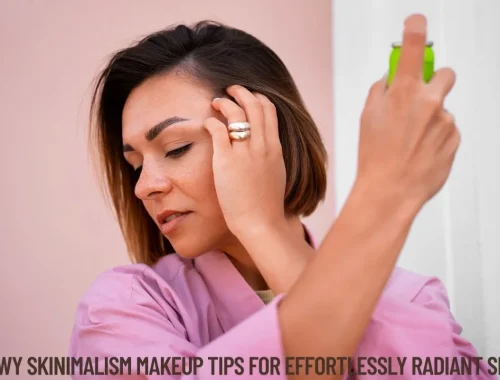
Complete Guide to Curly Hair Taper Styles: Visuals, Tips & Real-Life Advice
Curly hair is bold, beautiful, and full of personality—but finding the right haircut to show it off can feel tricky. That’s where the curly hair taper comes in: this stylish cut keeps your curls looking neat while celebrating their natural bounce. Whether you have soft waves or tight coils, a taper can transform your look—making it manageable, fashionable, and uniquely you.
In this guide, you’ll get everything you need for curly hair taper success: expert tips, visuals, relatable stories, and easy explanations—so anyone (even a fifth-grader!) can understand. Let’s dive in!
Table of Contents
ToggleWhat Is a Curly Hair Taper?
A “taper” haircut simply means your hair gradually gets shorter as it moves down the sides and back—usually blending into the neckline. Unlike a fade (which goes very short, often to the skin), a taper keeps some hair at the edges, looking neat but not too dramatic.
For curly hair, the taper does something special: it controls the volume around the edges while letting your texture take center stage on top.
Is a Taper Good for Curly Hair?
Absolutely! Tapers are often recommended by stylists for anyone with curls, waves, or coils. Here’s why:
-
Controls bulk on the sides and back, making curls easier to style.
-
Frames your face, highlighting eyes and cheekbones.
-
Low maintenance: Grows out naturally and looks tidy between cuts.
-
Customizable for all curl types and personalities.
Even busy mornings got easier for me once I got a taper: my sides never puffed out awkwardly, and styling was a breeze.
What Is Type 1, 2, 3, 4 Curly Hair?
Knowing your curl type helps you (and your barber!) pick the perfect look and routine. Here’s a simple breakdown:
| Type | Name | Texture | What it Looks Like |
|---|---|---|---|
| Type 1 | Straight | No curl, no wave | Silky, flat |
| Type 2 | Wavy | Loose S-shaped waves | Gentle curve, beachy texture |
| Type 3 | Curly | Defined ringlets/curls | Springy, bouncy |
| Type 4 | Coily/Kinky | Tight coils/z-pattern | Small curls, voluminous |
Most people fall somewhere between types, not in just one box. I have a mix—waves near the back, defined curls on top—and a taper suits all those textures at once!
Most Popular Curly Hair Taper Styles (with Visuals)
Below are popular curly taper styles, with clear descriptions and what makes each work.
1. Classic Curly Taper
-
Look: Longer curls on top, hair gradually shortens to the nape and ears.
-
Who it suits: Everyone with curls, from loose type 2s to type 4 coils.
2. Curly Taper Fade
-
Look: A slightly more dramatic finish, where sides and back “fade out” quicker, but not as short as a standard skin fade.
-
Who it suits: People who want a modern, clean look but don’t want the full faded effect.
3. Curly Taper with Defined Edges
-
Look: Crisp line-up at the forehead or temples, with tapered back and sides. Curls pop on top; edges look sharp.
-
Who it suits: Great for round, oval, or square faces—adds structure.
4. Mohawk Taper for Curls
-
Look: Tapered sides but keeps most length in a strip down the center/top—think modern, soft mohawk.
-
Who it suits: Adventurous styles, younger faces, bold personalities.
5. Temple Taper (Brooklyn Taper)
-
Look: Only the temples and neckline are gently tapered, while sides stay a bit fuller.
-
Who it suits: Those who want minimal change, with a little clean-up.
Which Haircut Is Best for Curly?
The best cut is one that respects your curl type, face shape, and routine. But popular choices include:
-
Tapered afro: For coily/kinky hair (type 4), a rounded shape up top, gently tapered at the sides/back. It highlights natural coils and requires minimal daily styling.
-
Curly undercut/taper: For type 2/3, sides/back are short, top left longer and wild. Easy to style and lets curls shine.
-
Medium curly taper: Not too short, not too long. Enough length to show curl pattern, but keeps edges clean.
Personal note:
A stylist once told me: “Let your curls be the MAIN act—the taper is just the frame.” It’s great advice. Don’t hide those curls!
How to Get the Perfect Curly Hair Taper: Tips & Steps
1. Know Your Curl Type and Face Shape
Bring clear photos of what you want. Tell your barber: “I want a taper for my curl type, but please leave enough length up top.” If your hair shrinks (gets shorter when dry), mention it!
2. Ask for Scissor Over-Clippers
Trimmers are sharp, but for curly hair, a good stylist will often use scissors to blend and shape—giving a softer finish and less “poof.”
3. Leave More Length Than You Think
Curls shrink up! Always leave more length on top than you expect, because it will curl tighter as it dries. When in doubt, ask your barber to trim a bit less and come back for tweaks.
4. Tailor the Sides and Back
Depending on your routine:
-
Busy? Go shorter at the neckline for a longer time between cuts.
-
Want volume/control? Leave the sides a touch longer.
Unique Insights: Curly Hair Taper Dos and Don’ts
Do:
-
Use a satin/silk pillowcase to reduce frizz and preserve your taper shape.
-
Moisturize with leave-in conditioner, especially at the edges where hair is shortest.
-
Refresh curls with water and a light curl cream, instead of always washing.
Don’t:
-
Never use barbershop “thin-out” razors; they can make curly ends look frayed.
-
Avoid heavy waxes or gels that weigh curls down or create white flakes.
Story: My friend used a heavy gel on his curly taper—by lunch, it flaked everywhere and lost bounce. Now he sticks to curl creams and gets consistent compliments!
Curly Hair Taper Care Routine (Simple & Effective)
-
Wash gently: Use sulfate-free shampoo twice a week (or as needed).
-
Condition: Hydrate after every wash. Curls love moisture!
-
Detangle with fingers or wide-tooth comb: Only when wet and full of conditioner.
-
Style with curl-friendly leave-in or mousse: Scrunch gently, don’t rake.
-
Air dry or use a diffuser: High heat flattens curls; gentle drying keeps shape intact.
-
Edge touch-up: Every 2–4 weeks, get your taper refreshed by a pro or try a “cleanup” at home.
Which Is Better, Fade or Taper for Curly Hair?
This comes up a lot! Here’s an easy comparison:
| Feature | Taper | Fade |
|---|---|---|
| Length at ends | Leaves hair (short, never skin) | Can go to bare skin |
| Look | Softer, classic, versatile | Edgier, sharper |
| Daily wear | Grows out naturally, low-maintenance | Needs frequent touch-ups |
| Curls effect | Enhances shape without shrinking | Makes top pop more, but high contrast |
Tapers are generally better for curly hair if you want a natural look, easy upkeep, and less dramatic contrast. Fades are great for bold, modern styles, but require more maintenance.
Bonus: Visual Guide to Curly Hair Taper Styles
-
Classic Taper: Clean but not too short around edges, curls left proud and full on top.
-
Defined Edge Taper: Best for adding structure to soft faces.
-
Curly Mohawk Taper: A daring twist for festival season or if you want to stand out.
FAQs for Curly Hair Taper Fans
Is a Taper Good for Curly Hair?
Yes! It highlights curls and controls volume—making styling simple and the look fresh.
What Is Type 1, 2, 3, 4 Curly Hair?
It’s a system that describes hair texture: 1 = straight, 2 = wavy, 3 = curly, 4 = coily/kinky.
Which Haircut Is Best for Curly?
A curly taper, curly undercut, or taper afro are all excellent—pick the one that matches your style and routine.
Which Is Better, Fade or Taper?
A taper is more gradual and easier to maintain for curly hair while fading is sharper but can need more upkeep.
Final Thoughts: Tapers Let Your Natural Hair Shine
Ultimately, curls are meant to be seen, not hidden! Tapered haircuts are a celebration of texture, shape, and easy confidence. From my first taper cut to helping friends discover theirs, I’ve seen how this style transforms not just hair, but self-esteem too.
Whether you have loose waves or tight coils, the right taper will make your hair routine short, sweet, and full of swagger. Don’t be afraid to try new looks, chat with your barber, and enjoy the magic of curly hair—tapered to perfection.
You May Also Like

Co-Washing vs. Shampooing: Which Is Better for Your Curls?
April 22, 2025
Top 20 Luxury Streetwear Brands to Know in 2025 (From Off-White to Rhude)
October 28, 2025

